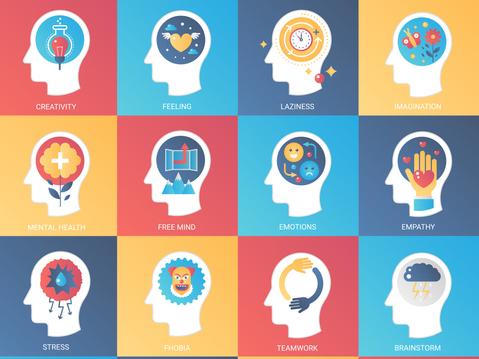Emotion plays a significant role in learning, recent research suggests. When students consistently experience positive emotions while learning, they not only display improved understanding and memory retention, but their emotional involvement motivates and engages them and leads to higher academic performance.
In my view, emotions are an indispensable yet frequently overlooked element of the learning process. In this resource, I share a method I have developed to leverage emotions and enhance students’ learning and engagement, called mastering emotions in entrepreneurship education (MEE). The exciting part is that educators from any discipline can apply these principles.
The MEE method in action
The MEE approach functions on the basis that by intentionally integrating emotional triggers into the curriculum educators enhance engagement and accelerate learning. The successful implementation of this technique involves considering the four following stages:
1. Before class: identifying students’ emotional sources
It is essential to gather information about students’ primary emotional triggers before the start of class. By engaging with these emotional cues you can create lessons that resonate with them.
One way I’ve done this in the past is to encourage students to share their favourite songs to give me an idea of what impacts them emotionally. Also, during a session I led in Finland, I asked students to bring an object that holds personal significance to them. Whether a family photo, a favourite book or a small keepsake, these objects gave me insight into personal experiences and allowed me to connect the course material to what students value. Another example includes prompting students to share stories of a time when they faced a major challenge. By understanding what evokes a sense of motivation or fear in them, you can tailor discussions accordingly.
2. During class: unleashing students’ emotional triggers
During this stage, I seek to gradually elicit emotions from students, building upon the insights gained from the previous stage. The aim is to create a lasting learning experience that effortlessly embeds the educational content into the students’ emotional memory. By fostering a positively charged emotional environment you can seize the opportunity to introduce essential concepts.
In a recent technopreneurship class, I attempted to forge a stronger emotional bond between students and their learning and ignite their entrepreneurial spirit. Following the MEE approach, I composed a piece of music titled For when you need your heart blending uplifting lyrics voiced with music. The response was fantastic; students found the composition both inspiring and energising.
For a class on overcoming entrepreneurial setbacks, I engineered a “failure wall” where students anonymously posted their biggest academic or personal failures on sticky notes. We then discussed how these failures could be transformed into learning opportunities and successes. The exercise not only created a safe space for sharing and reflection but also fostered a supportive atmosphere. By connecting their emotional experiences with ideas about resilience, students internalised the content and contributed to engaging discussions about practical strategies for overcoming business challenges.
The MEE method sees emotions such as joy and passion as vitamins that enhance students’ connection to their learning. When these emotions are effectively induced, they become powerful catalysts, unlocking and amplifying students’ entrepreneurial learning.
- Resource collection: Back to the basics of pedagogy
- Serious play: building knowledge with Lego bricks
- Relieve student boredom by ‘activating’ lectures
3. During class: assessing students’ learning during their emotional peak
During this stage, I harness the classroom’s positive energy to assess students’ learning. It’s a challenge to conduct assessments when emotions are at their peak, but it becomes achievable with practice.
To do this, I use a technique called the “emotion map” exercise, during which students create a visual or descriptive representation of their emotional responses to an activity, linking these feelings to the concepts they’ve learned. This technique captures their emotions while they are still fresh, enhancing their understanding of and connection to the material.
4. After class: reviewing and refining
A vital aspect of the MEE method is the continuous evaluation of students’ emotional engagement and learning outcomes. By regularly gathering feedback from students, you can fine-tune your approach to better align with their emotional triggers.
As educators, we can create more dynamic, engaging and effective learning experiences for our students by harnessing the learning power of emotions. As Einstein once said, “It is the supreme art of the teacher to awaken joy in creative expression and knowledge.” The MEE method seeks to realise this vision by introducing key pedagogical principles, techniques and best practices crafted to transform learning into an enriching emotional experience.
Vik Perez is an associate professor at the Entrepreneurship and Enterprise Hub at Xi’an Jiaotong-Liverpool University in China and the author of Entrepreneurship and Neuroscience: Researching Brain-driven Entrepreneurship.
If you would like advice and insight from academics and university staff delivered direct to your inbox each week, sign up for the Campus newsletter.




comment